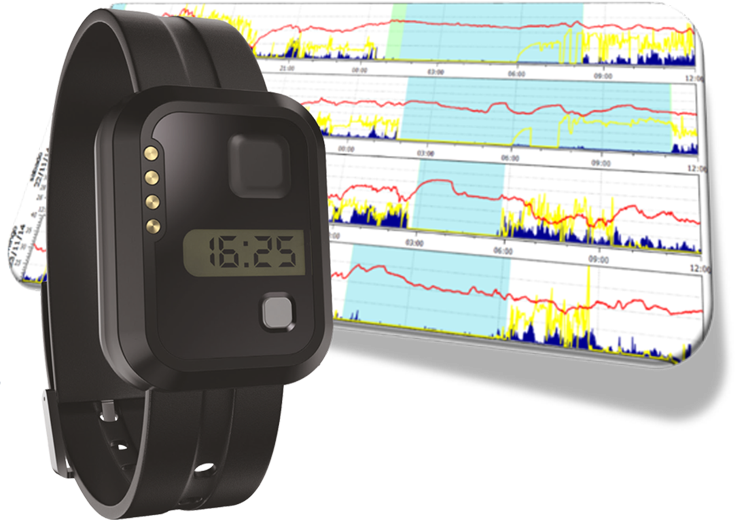One of the most valuable diagnostic tests in a sleep doctor’s arsenal is actigraphy. I tell my patients to me it’s like an MRI of your sleep-wake cycle. I say that because it takes data and converts it into a visual representation and data tables that hold an invaluable insights to treating insomnia, hypersomnia, and/or optimizing sleep.
IMHO Actigraphy is one of the most underutilized tests in clinical sleep medicine and is undervalued for its ability to measure sleep, rest, activity, steps, and intensity of light exposure over a period of time. It is worn on the wrist like a watch for 7-14 consecutive days.
When a patient comes to see me for chronic insomnia it is a complicated puzzle to unravel, but actigraphy quickly and accurately helps to tease apart the different subtypes of insomnia, in particular revealing the circadian rhythm disorders. Sometimes it also shows you other important aspects of the sleep disturbance such as needing to test for sleep disordered breathing. It can also highlight which of the pillars of CBT-I will be most important in managing the case or show you that CBT-I doesn’t apply.
In the next few days I’ll show you some cases of patients presenting with chronic insomnia and illustrate how different they are and how the actigraphy helps me to customize an optimal sleep prescription plan! Even though we talk about cognitive behavioral therapy for insomnia as the gold standard treatment for chronic insomnia – not all chronic insomnia is treated the same.
Compared to wearables, actigraphy continues to be more valuable to me as a tool because it has been validated in medical research and for its software that allows for sophisticated visuals and data analysis. Actigraphy is also more dynamic than wearable data because it allows me to input data from a sleep diary to make it more accurate and generate important data points not accessible to me with wearables, at least for the time being. I’m excited to see how wearables evolve for more applications in the sleep medicine clinic but for now I’m using actigraphy.
Have you heard of actigraphy or used it?


